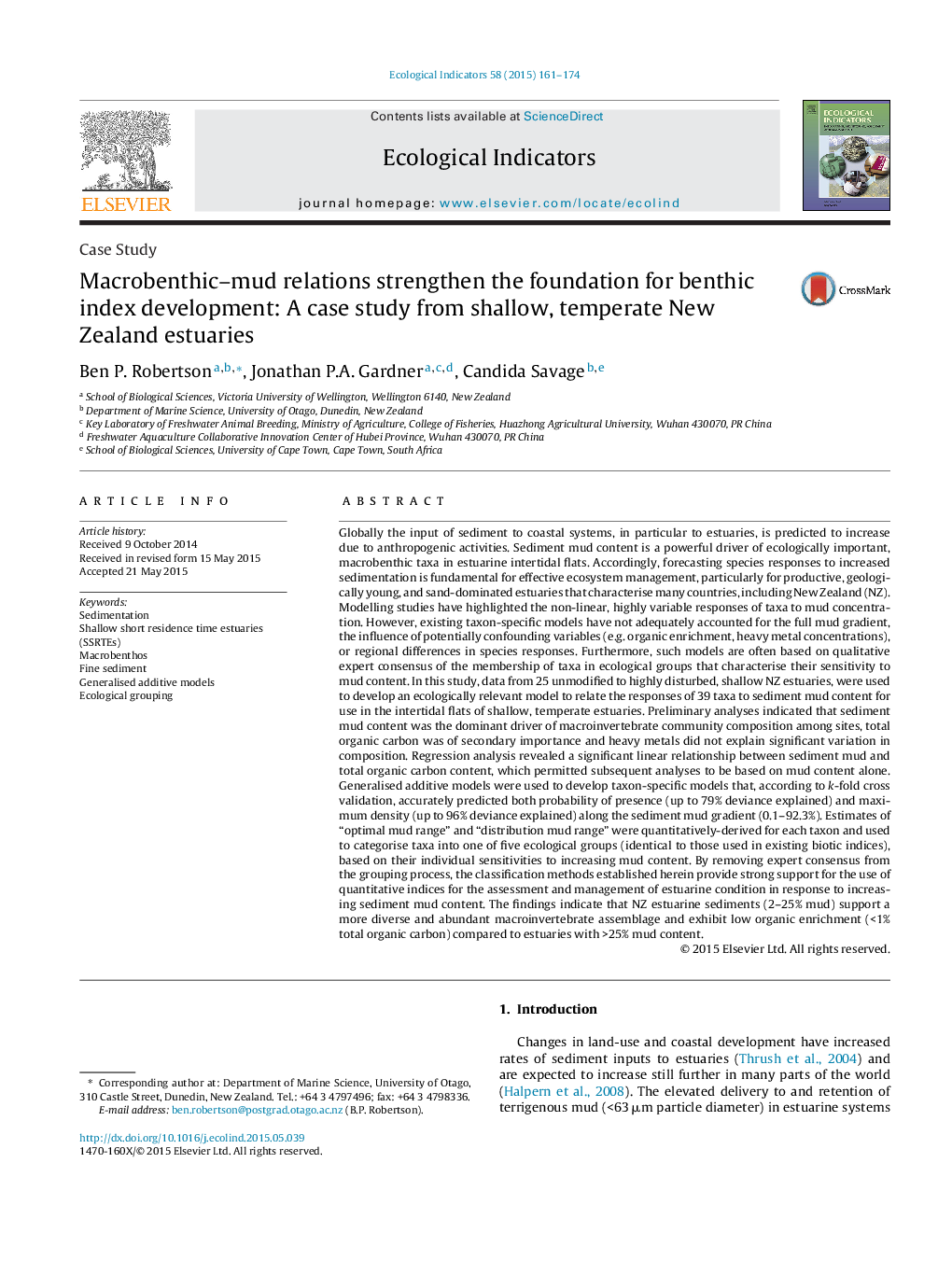| کد مقاله | کد نشریه | سال انتشار | مقاله انگلیسی | نسخه تمام متن |
|---|---|---|---|---|
| 6294240 | 1617143 | 2015 | 14 صفحه PDF | دانلود رایگان |
عنوان انگلیسی مقاله ISI
Macrobenthic-mud relations strengthen the foundation for benthic index development: A case study from shallow, temperate New Zealand estuaries
ترجمه فارسی عنوان
روابط ماکروبنتیک-گل باعث تقویت پایه ای برای توسعه شاخص های بنیادی می شود: مطالعه موردی از دره های مرطوب و مرطوب نیوزیلند
دانلود مقاله + سفارش ترجمه
دانلود مقاله ISI انگلیسی
رایگان برای ایرانیان
کلمات کلیدی
موضوعات مرتبط
علوم زیستی و بیوفناوری
علوم کشاورزی و بیولوژیک
بوم شناسی، تکامل، رفتار و سامانه شناسی
چکیده انگلیسی
Globally the input of sediment to coastal systems, in particular to estuaries, is predicted to increase due to anthropogenic activities. Sediment mud content is a powerful driver of ecologically important, macrobenthic taxa in estuarine intertidal flats. Accordingly, forecasting species responses to increased sedimentation is fundamental for effective ecosystem management, particularly for productive, geologically young, and sand-dominated estuaries that characterise many countries, including New Zealand (NZ). Modelling studies have highlighted the non-linear, highly variable responses of taxa to mud concentration. However, existing taxon-specific models have not adequately accounted for the full mud gradient, the influence of potentially confounding variables (e.g. organic enrichment, heavy metal concentrations), or regional differences in species responses. Furthermore, such models are often based on qualitative expert consensus of the membership of taxa in ecological groups that characterise their sensitivity to mud content. In this study, data from 25 unmodified to highly disturbed, shallow NZ estuaries, were used to develop an ecologically relevant model to relate the responses of 39 taxa to sediment mud content for use in the intertidal flats of shallow, temperate estuaries. Preliminary analyses indicated that sediment mud content was the dominant driver of macroinvertebrate community composition among sites, total organic carbon was of secondary importance and heavy metals did not explain significant variation in composition. Regression analysis revealed a significant linear relationship between sediment mud and total organic carbon content, which permitted subsequent analyses to be based on mud content alone. Generalised additive models were used to develop taxon-specific models that, according to k-fold cross validation, accurately predicted both probability of presence (up to 79% deviance explained) and maximum density (up to 96% deviance explained) along the sediment mud gradient (0.1-92.3%). Estimates of “optimal mud range” and “distribution mud range” were quantitatively-derived for each taxon and used to categorise taxa into one of five ecological groups (identical to those used in existing biotic indices), based on their individual sensitivities to increasing mud content. By removing expert consensus from the grouping process, the classification methods established herein provide strong support for the use of quantitative indices for the assessment and management of estuarine condition in response to increasing sediment mud content. The findings indicate that NZ estuarine sediments (2-25% mud) support a more diverse and abundant macroinvertebrate assemblage and exhibit low organic enrichment (<1% total organic carbon) compared to estuaries with >25% mud content.
ناشر
Database: Elsevier - ScienceDirect (ساینس دایرکت)
Journal: Ecological Indicators - Volume 58, November 2015, Pages 161-174
Journal: Ecological Indicators - Volume 58, November 2015, Pages 161-174
نویسندگان
Ben P. Robertson, Jonathan P.A. Gardner, Candida Savage,
